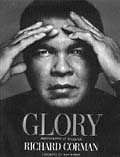WHEN I BOUGHT my house, I had big visions for the garden. I imagined myself in polka-dotted garden gloves, a straw hat tied around my chin with a scarf, picking exotic vegetables to cook for my friends, drying lavender for elaborate holiday gifts, and clipping flawless blooms to give by the armful to my grateful, adoring neighbors. Then I bought a gardening book. My loamy dreams gave way to dread, thoughts of bloodmeal, heavy sacks of potting soil, and the slow torture of slugs.
I lost what yard there was to a backhoe and the installation of a drainage system to protect my sodden basement. That spring, my dog had the run of moss and small chunks of concrete, neighbors snarled at the untidiness, and I ate alone, too embarrassed to invite anyone over to barbecue. Desperate, I opened the newspaper to the gardening column one morning, convinced that the transformation would begin that very day. I would haul rocks and turn soil. Older and wiser, I would plant a few hearty shrubs. Possibly even carrots.
Before I could so much as pull a weed, the columnist warned, I had to send a spadeful of my dirt through the bureaucracy of city government so I could find out how to prepare my ground for planting. I’d been procrastinating long enough on driving to the store to buy a packet of seeds and a bush; now I had to pay for a soil test? I picked up the Yellow Pages and looked under “landscaping.” (And here I am, pushing garden books on poor, unsuspecting would-be gardeners.)
Marianne Binetti was just the antidote for my jaded sensibilities. On page two she decrees, “ignore the soil test hype.” Easy Answers for Great Gardens: 500 Tips, Techniques, and Outlandish Ideas (Sasquatch Books, $14.95) became my self-help book, a sort of Chicken Soup for the Urbanite’s Soul. Binetti forgives ignorance, answering questions like “What is mulch?” without a sneer. She forbids guilt in the face of dead plants or the fact that you had to neglect the garden for several weeks. Sidebars, a question-and-answer format, and a comprehensive index anticipate the easily daunted.
Binetti is a Northwest native whose home in Enumclaw encompasses two acres, the lab where she formulates answers to the questions sent in by Seattle P-I readers each week. Between her writing and her children, her philosophy emerged: “Worry about your garden less and enjoy your garden more. And above all, don’t work too hard.”
In her lighthearted accounts of gardening breakthroughs and mishaps, plants take on the character of recalcitrant children—unruly, spoiled, or shy—except that they can be “shoveled,” or tossed in the compost pile (provided they’re disease-free). Binetti’s preferred solution to stubborn difficulties is a welcome contrast to gardening experts who are quick to prescribe the plant equivalent of open-heart surgery.
The subtitle does not lie. The outlandish ideas are often about as appealing as a rusty pickup on the front lawn, but Binetti deserves points for flaunting the stern-British-dowager approach to gardening and for indulging the whims of her newspaper audience. Martha Stewart would curl her lip and growl at those who ask, “What if my soil is lousy and I don’t want to add organic matter or compost, but I still want to grow beautiful flowers and healthy vegetables?” (The answer: container gardening.)
Jennifer Heath tended garden plots from the Andes to Afghanistan, reaping an international assortment of garden myth and lore along the way. Her memoir, The Echoing Green (Plume, $13.95), encompasses her own history and the history of gardens as sacred spaces, family shrines, medicine cabinets, and, more recently, responses to materialistic, technology-centered societies.
Don’t mistake The Echoing Green for an encyclopedia. Without even an index, this is pure meditation, with gems of arcane knowledge, like the origins of jack-o’-lanterns and secret powers of corn dolls, offered only to those willing to navigate its twisty, thorny paths. Pondering her own garden, Heath aspires to more orderly habits: “I can maintain a vision for a short period, but eventually I lose track and the first fancy is crowded out by another.” This line could easily describe the book, where thoughts are as undisciplined as wildflowers, but often as pleasantly surprising.
To her credit, Heath’s thoughts on the importance of city folks’ connection to the earth move beyond dull clich鳮 She spices things up with lascivious legends and considerable wit. Throughout, she reminds us that gardens, even if they are only a few pots in the living room, are crucial to a sense of self (hence the idea of feeling “grounded”). In one African myth, the gods created humanity after the first man and woman asked, “Who will take care of our garden when we die?” Heath’s tour of her own backyard sanctuary, with its diversions into fairy tale and legend as well as her colorful family history, illustrates the capacity of gardening to enrich our lives.
IT’S THE POINT at which the lure of cultivation becomes an obsession that interests Mike Dash and Eric Hansen, who ponder the cults of the tulip and the orchid, respectively. Dash’s supremely readable account of the tulipomania that gripped 17th-century Holland has particular resonance today. Tulipomania: The Story of the World’s Most Coveted Flower and the Extraordinary Passions It Aroused (Crown Publishers, $23) addresses the temptation of instant profits, the democratization of what had been the province of the elite, a momentum of trading approaching mass hysteria. Ring any bells?
After a surprisingly engrossing description of the tulip’s migration from the windswept hillsides of northern China to the Ottoman Empire (where Muslims considered the tulip a holy flower and wore them as talismans), Dash describes its increasing appeal to a few brilliant and single-minded Dutchmen. These characters, as vivid and intriguing as those of any novel, made the first unpredictable attempts at flower propagation and initiated the trade in tulip bulbs.
By 1637, the sale of one rare tuber could feed, clothe, and house a whole Dutch family for half a lifetime, and a single bulb could be worth a hundred times its weight in gold. The first known futures market thrived among unsavory figures in Holland’s taverns (think day-traders). Dash has uncovered esoteric accounts like that of Wouter Winkel, whose orphaned brood became wealthy overnight from the auction of their father’s collection. A lucky few escape the mania’s inevitable bust.
Eric Hansen’s Orchid Fever: A Horticultural Tale of Love, Lust, and Lunacy (Pantheon Books, $23) also concerns itself with obsession, a contemporary one for what is possibly the world’s most fragrant, pornographic, and demanding flower.
Subcultures, from Star Trek conventions to child beauty pageants, are simultaneously repulsive and mesmerizing, and the absurdities and contradictions of the orchid growers’ world make it even more fascinating. The devotees of this delicate, fragile flower are often biker types, thugs, and ex-policeman, possibly as a result of the orchid’s international renown as an aphrodisiac. Hansen has tracked down otherwise sane businessmen and grandmothers who brave land mines and climb trees in search of rare specimens.
The bureaucracy of the orchid trade is ironic in the extreme, a system in which exports are tightly regulated—ostensibly to promote conservation—but the orchid’s rain forest habitat can be bulldozed or flooded with impunity. A secretive government organization conducts raids and slaps heavy fines on the most unlikely criminals, whose legal holdings frequently find their way into the hands of an equally unlikely powerful elite: the botanical gardens of several nations.
Hansen doesn’t have the storytelling talent of Dash, and similar material was handled better by New Yorker writer Susan Orlean in last year’s The Orchid Thief, but if these horticultural disciples are as obsessive as they sound, they won’t be able to get enough of orchid books.





